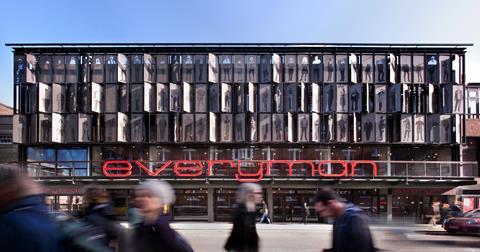Ike Ijeh on what the victory of Haworth TompkinsÔÇÖ Everyman Theatre in Liverpool means for architecture


As a student in Liverpool in the late nineties the Everyman (as it was affectionately known) was one of the most popular haunts in the city. Its subterranean bar was a regular stop-off point on the nightly pilgrimage from the university into town and while it was shabby, dim and moderately uncomfortable, visiting it felt like settling into a comfortable pair of shoes or calling upon an old family friend. Stripped of the caustic panache of many of the cityÔÇÖs more salubrious night spots, it offered that curious, ritualistic and dazzlingly unglamorous mix of normality and endearment that binds both families and cities together.
Normality is not something that normally enthuses architects but it is a quality that clearly fascinates Haworth Tompkins, whose rebuilt Everyman Theatre won last nightÔÇÖs Riba 2014 Stirling Prize. At a recent preview event for their overhaul of another much-loved theatre, Powell and MoyaÔÇÖs Chichester Festival Theatre, an audience member, after patiently listening to various impassioned soliloquies describing the nature of the architectsÔÇÖ new interventions, thrust her hand up to ask a simple question: ÔÇťBut it looks the same to meÔÇŁ she insisted, ÔÇťwhat have you actually done?ÔÇŁ
This is the whole point. Much of Haworth TompkinsÔÇÖ most celebrated works have carefully inserted new into old. But the nature of their accretions is rarely showy, ostentatious or at times, even evident. Instead it is based on an exhaustive analytic rigour and forensic understanding of every sinew of the existing in order to craft an organic architectural response that fits as effortlessly as a velvet glove.
The trick with the Everyman and the key to its and its architectÔÇÖs success was their ability to upgrade this principle from an architectural scale to an urban one. With the old Everyman demolished, the ÔÇťoldÔÇŁ the new building had to integrate with was none other than the city of Liverpool itself and the sheer skill and conviction with which this synthesis has been achieved was undoubtedly a driving factor in its Stirling win.
This is a building that is a selfless homage to the soul and spirit of Liverpool. Already loaded with the enormous cultural reverence extended towards its predecessor, the new Everyman embarks upon a shameless strategy of civic seduction that skilfully harnesses architecture to flatter and flirt with its metropolitan suitor. This programme culminates in the 105 images of ÔÇťnormalÔÇŁ Liverpudlians emblazoned on its frontage, a clever ruse that quite literally embeds the community into the theatreÔÇÖs physical fabric and powerfully symbolises the veracity of its civic aspirations.
This is a building that is a selfless homage to the soul and spirit of Liverpool
Intriguingly, evidence of an emerging and buoyant civic spirit was found in all of this yearÔÇÖs Stirling nominees. The shortlist marked something for a city resurgence with the great English cities of London, Liverpool, Birmingham and Manchester all represented. Moreover, all the nominees, with the exception of the Shard, were public buildings and even the Shard, with its hotel, restaurants, bars and viewing gallery, is about as public as private corporate building can get.
The shortlist was also testament to how architecture flourishes when it actively engages with the city the surrounds it. Public buildings are best placed to utilise this rich relationship and in its own way, each building thrives on its wider civic popularity. The Aquatics Centre has been transformed from an elite sporting arena to an egalitarian leisure amenity for all. As well as winning the BBC public vote, the Library of Birmingham received some of the loudest cheers of the night and, despite its dubious skin, represents a virile resurgence of a municipal template that many assumed was obsolete.
While, as educational buildings, the LSE Student Centre and Manchester School of Art serve more specialist users, both of them, particularly the relentlessly dynamic LSE, dramatically demonstrate how an academic campus can both morph and mimic the urban condition. Only the Shard, indelibly stained with the stigma of shambolic planning and economic severance that sadly scars LondonÔÇÖs terse relationship with tall buildings, has strongly divided opinion. But even so, its claim to be a ÔÇťvertical cityÔÇŁ rings truer than with any other European skyscraper to date.
Critic Kenneth Powell once wrote that an architect can do nothing to a city without political will. Well, in the same way, a building can offer nothing to a city without civic engagement and this yearÔÇÖs Stirling winner and nominees prove it. The Everyman Theatre may have triumphed on the night. But the real winners were the long established concepts of city and public building that were lovingly rekindled in each nominee.
Ike Ijeh is ║├╔ź¤╚╔˙TVÔÇÖs architectural correspondent




























No comments yet